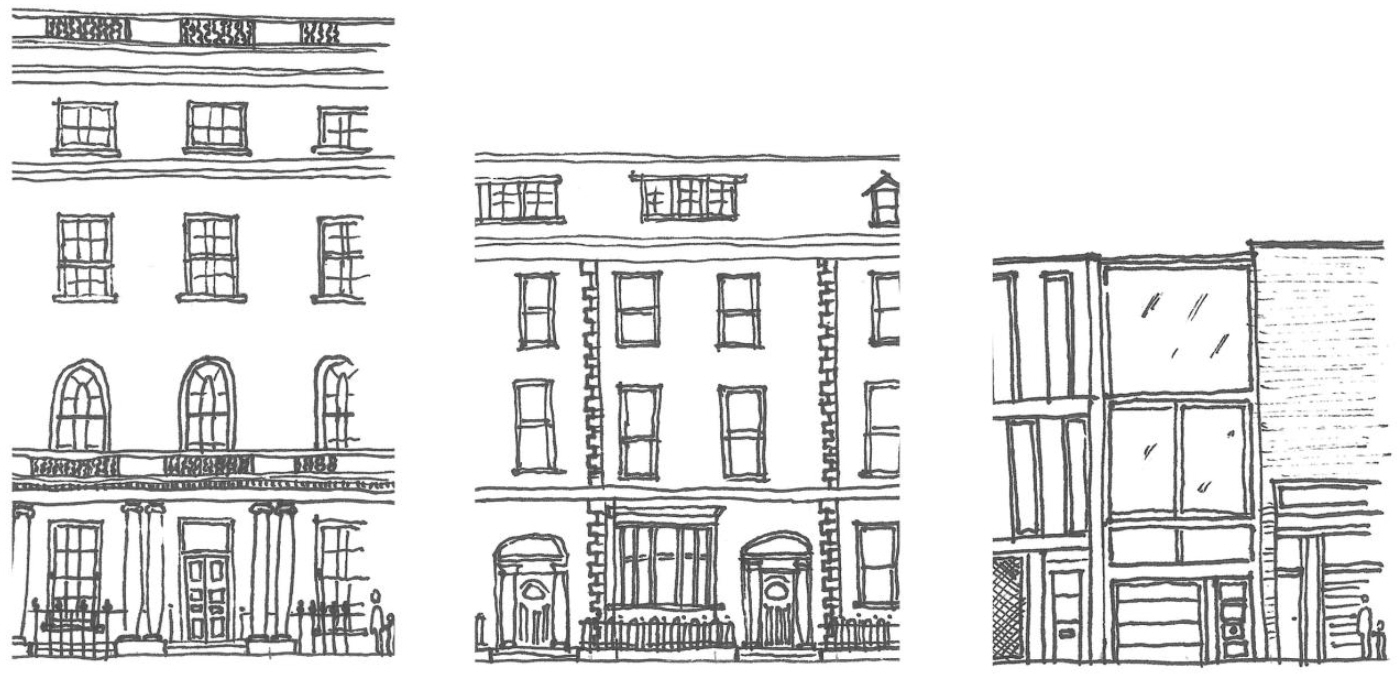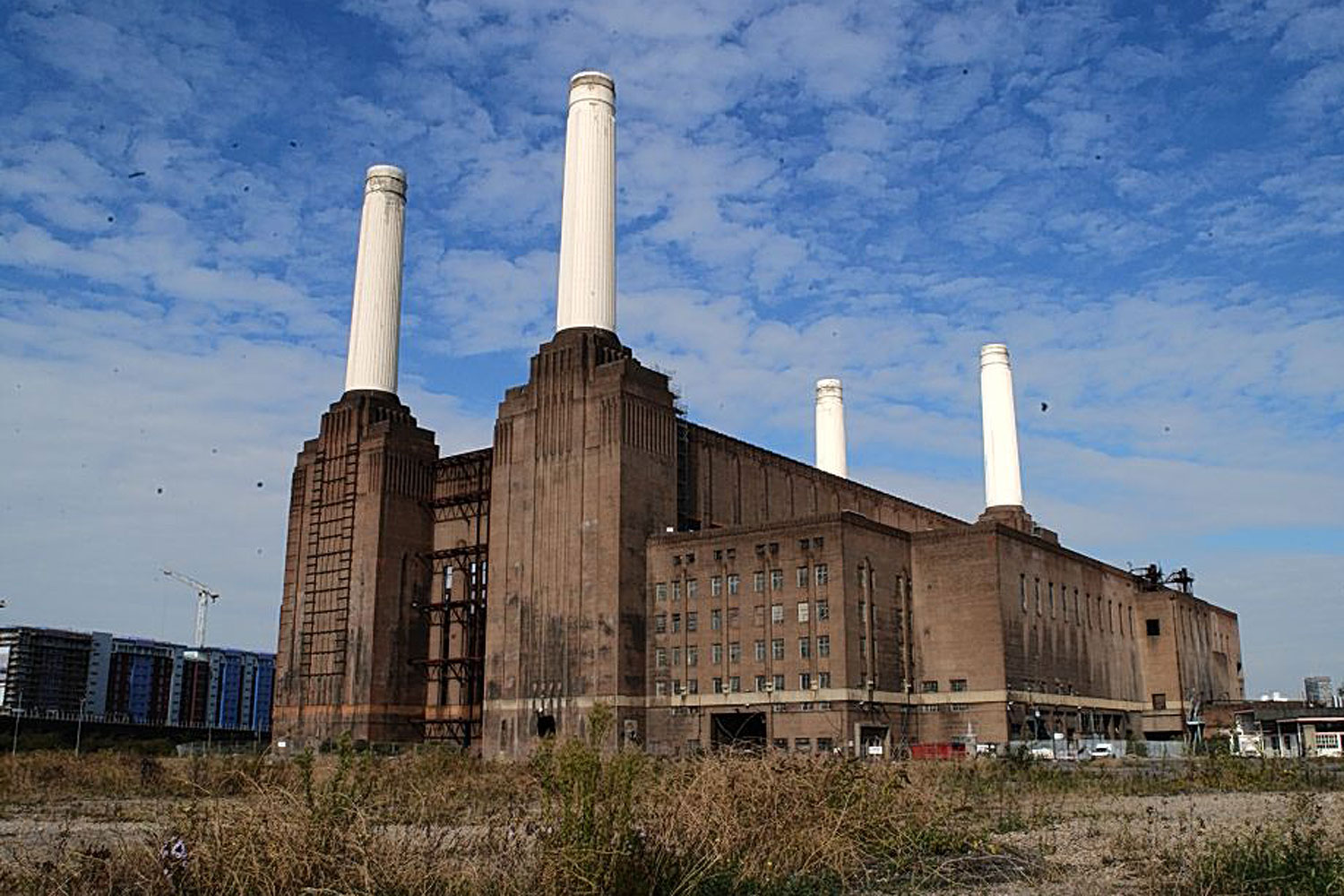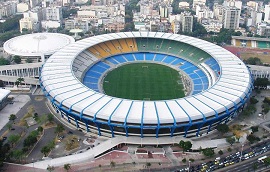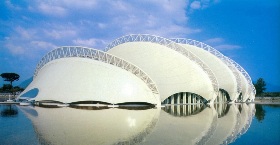Architectural styles
See also: English architectural stylistic periods.

|

|

|

|

|

|
[edit] Shelter
Buildings first evolved from a need for shelter, security, places for worship, places for congregation, and so on. The way that these needs were satisfied using the available materials, space and skills gave rise to a wide range of building techniques and styles.
The origins of human-made shelters can be traced back over 40,000 years to the ice age and the Siberian Steppe, where remains have been found of simple shelters constructed from animal skins draped between sticks. It is likely that structures of this type were the first dwellings constructed by humans.
These ‘tented’ structures thrived in regions where materials were scarce, or where survival required mobility; both conditions which tended to be brought about by low rainfall. Changing climates brought about a slow transition from nomadic tents to permanent huts and vice versa, and it was from the resultant process of intermediate modification that an enormous range of composite dwellings evolved.
Some of these basic generic forms of structure are still used in remarkably un-changed forms throughout the world today, for example, the black tent, the mud brick hut, and the yurt (a composite structure still in common use in Mongolia).
It was through the maintenance and personalisation of these early structures, that decoration was introduced, and they became more than purely functional shelters. As cultures developed and knowledge was formalised, the process of building became a craft and vernacular 'architecture' emerged.
[edit] Early civilisations
In many early civilisations, architecture not only provided shelter, but also reflected engagement with the divine or the supernatural, or was used to demonstrate the political power of the ruling elite.
[edit] Neolithic
Neolithic 'architecture' emerged between 10,000 and 2,000 BC and included not just housing for shelter, but also tombs, religious buildings, symbolic structures and monuments such as megaliths. Some of these structures were very elaborate. Building materials included; mud brick, skins, textiles, wattle and daub, stone and timber.
[edit] Mesopotamia
The word Mesopotamia refers to the region of the Tigris–Euphrates river system. It encompasses a number of cultures from the 10th millennium BC to the 6th century BC. During this period, complex systems of urban planning were developed, along with building styles typified by the courtyard house and ziggurats, massive stepped pyramids built as part of temple complexes.
[edit] Africa
Historically, African architecture has been very diverse, incorporating a great number of external influences. Building materials included; thatch, textiles, timber, mud, mud brick, rammed earth, and stone. Most notably, the Ancient Egyptians developed great architectural monuments, the most famous of which are the Great Pyramid and the Great Sphinx of Giza. Due to the scarcity of wood in ancient Egypt, buildings and monuments were constructed using sun-baked mud brick and stone.
[edit] Greek
The Greeks developed civic, as well as religious ideals. Greek architecture, dating from about 900 BC to 1st century AD was notable not just for temples, but for a diverse range of public buildings, ranging from open-air theatres and public squares to public monuments. Architectural design adopted highly formalised decorative and structural characteristics, with a clear evolution of architectural style through three defined orders; Doric, Ionic and Corinthian.
See Classical orders for more information.
[edit] Roman
Roman architecture, emerging around 300 BC, adopted some of the characteristics of ancient Greek architecture, with a similar emphasis on civic buildings. However Roman architecture developed important structural elements such as arches, vaulted ceilings and domes, and included extensive use of concrete.
Roman architecture was renowned for its vast range of iconic building types, such as; temples, baths, villas, amphitheatres, palaces and circuses, as well as unprecedented civil engineering projects such as bridges, aqueducts and roads.
[edit] Byzantine
Dating from around AD 330, when the Roman Emperor Constantine moved the Roman capital to Byzantium (later called Constantinople and now Istanbul), Byzantine architecture was a continuation of Roman architecture, but with influences from the Near East. Buildings increased in geometric complexity, the classical orders were used more freely and the Greek cross plan was adopted in church architecture which often included complex dome structures supported by massive piers.
[edit] Islamic
Islamic architecture incorporated architectural forms from the ancient Middle East and Byzantium, but also developed features reflecting Islamic religious and societal characteristics.
[edit] Persian
Persian architecture (found in the Iranian cultural continent) adopted complex vault and dome construction and developed a symbolic geometry typified by the high arched portal. Designs were often based on pure forms and symmetrical layouts with extensive decoration.
[edit] Indian
Indian architecture was very diverse, reflecting the complex history of the region. Known for its temples, palaces, forts and iconic Indian rock-cut architecture, its styles included pronounced Buddhist, Islamic and European influences.
[edit] Eastern Asian
Eastern Asian architecture encompassed the architecture of China, Korea and Japan. It was typified by buildings in which the horizontal axis was emphasised, with wide, heavy platforms and large ‘floating’ roofs.
[edit] Pre-Columbian
The pre-Columbian architecture of the American continent was renowned for its public and ceremonial buildings and for its monuments. The pyramids of Mesoamerica are the largest outside of Ancient Egypt, whilst Incan engineering was known for its terracing and stone masonry. In North America, cliff and earthen mound building was common, whilst tented structures provided shelter for more nomadic peoples.
[edit] Medieval architecture
The term medieval refers to the middle ages, the period in European history from the date of the deposition of the last Roman emperor in 476 AD to around 1500 AD. For more information see: Medieval architecture.
[edit] Pre-Romanesque
Pre-Romanesque architecture emerged in the late 8th century and continued until the emergence of Romanesque in the 11th century. It represents a long period of change that encompassed a vast range of architectural styles. It was typified by the combination of classical Mediterranean, Christian and Germanic architecture into innovative new forms, such as can be seen in Frankish monasteries and palaces.
[edit] Romanesque
Romanesque architecture was found in medieval Europe between the 10th and 12th centuries (although some would argue that it emerged earlier than this). It adopted some of the features of Roman and Byzantine architectural forms and materials, characterized by thick walls, round arches, vaults and vast towers. It was a pan-European style, although it is often referred to as Norman in the UK.
[edit] Gothic
Gothic architecture emerged in the 11th and 12th centuries in Europe. It was characterised by an emphasis on the vertical, with increasingly tall buildings, featuring almost impossibly thin stone structures, pointed arches and ribbed stone vaults, interspersed with expanses of glass, and supported by external flying buttresses.
For more information see: Gothic.
[edit] Renaissance architecture
Renaissance architecture emerged in Europe, in the 14th and 15th centuries, where there was a revival of interest in the classical antiquities and an emergence of new scientific understanding. It was noted for its clean lines, symmetry and proportion, reminiscent of the architecture ancient Rome, with the use of columns, pilasters and lintels, arches and domes. An understanding of perspective also led to more conscious composition of architectural form.
Whilst there was no distinction between artist, architect and engineer, buildings were attributed to specific individuals. Renaissance architecture was developed first in Florence, by Filippo Brunelleschi, and was then rapidly adopted by others, notably; Alberti, Michelangelo, Palladio, and in the UK by Inigo Jones.
[edit] Baroque
Baroque architecture emerged in Italy in the late 16th century. It was a more theatrical version of Renaissance architecture, with dramatic lighting and colour, illusory effects such as trompe l’oeil, and designs that played games with architectural features, sometimes leaving them incomplete. Its buildings typically include central towers, domes, portico or other central projections in the main façade. As Baroque architecture coincided with European colonialism, it is a style that can be seen throughout much of the world.
For more information, see Baroque architecture.
[edit] Rococo
Rococo was an extreme, decorative development of Baroque architecture that emerged in the 18th century as a reaction against grandeur and symmetry. It was a more fluid and florid elaborate style, comprising ornate, asymmetric designs and pastel shades.
For more information, see Rococo.
[edit] Palladian
Palladian architecture was inspired by the designs of the Venetian architect Andrea Palladio and his book, I Quattro Libri dell'Architettura (1570). Palladian architecture became popular during the mid-17th and 18th centuries when I Quattro Libri dell'Architettura was translated by Giacomo Leoni, (1715), at the same time as a series of books reproducing the designs of Inigo Jones, an early follower of Palladio.
Palladian designs were based on the symmetry and perspective of the temples of the Ancient Greeks and Romans. It was characterised by the use of pediments and symmetry, and proportions that were based on mathematics rather than ornament. Palladian architecture is recognisable for its classical facades.
For more information, see Palladian architecture.
[edit] Georgian
Georgian architecture is largely based on Palladian principles and is generally considered to run from 1714 to 1830 or 1837, and relates predominately to the Hanoverian kings George I to George IV.
For more information see: Georgian.
[edit] Neoclassical
Neoclassical architecture emerged in the mid 18th century as a reaction to Rococo. Derived from Palladian architecture, it has references to classical Greek and Roman architecture. Unlike Rococo, neoclassical architecture has a flat, planar quality, emphasising the wall and the separation of elements.
Notable examples of neoclassical architecture include the White House in Washington and the Bank of England in London.
For more information, see Neoclassical architecture.
[edit] Beaux Arts
Beaux Arts refers to the style taught first at the Académie royale d'architecture from 1671 –1793, and then from 1795 at the École des Beaux Arts in Paris. It was a heavily decorative style characterised by symmetry, flat roofs, arched windows and doors and classical details.
For more information, see Beaux Arts style.
[edit] Early modern and industrial architecture
The emergence of the Industrial Revolution brought with it mass production. Aesthetics and ornament, once the province of expensive craftsmen, became affordable to the middle classes and so vernacular architecture became increasingly ornamental.
At the same time, the widespread use of iron in industrial architecture led to the creation of larger and more austere buildings giving rise to the notion of ‘Dark satanic mills’. However, it also enabled the development of extraordinary new feats of engineering such as railways and railway stations and iconic buildings such as Paxton’s Crystal Palace (1851). The use of steel enabled the construction of skyscrapers, which first emerging in Chicago around 1890.
For more information, see Nineteenth century architecture
[edit] Art Nouveau
Art Nouveau was symptomatic of a struggle between the old and the new. Whilst it rejected some of the revivalist styles of the 19th century, it did adopt some of the elements of Rococo, with organic forms and applied art typified by Hector Guimard's Paris metro entrances. Notable exponents of art nouveau in architecture include Mackintosh and Gaudi.
For more information, see Art Nouveau.
[edit] Aesthetic movement
he Aesthetic movement (also known as Aestheticism) was a school of intellectual thought that emerged in England in the 1800s. The movement spread to Europe and North America in the late 1800s and became associated with a cultural approach that influenced fine art, music, literature, interior design, decorative arts and architecture on an international scale.
Seen as a distinct contrast to artistic movements that incorporated and highlighted the social and political themes of the times, the Aesthetic movement emphasised beauty and aesthetic values. In the fine arts it was associated with the phrase ‘art for art’s sake’.
For more information, see Aesthetic movement.
[edit] Arts and Craft Movement
The Arts and Craft Movement developed in Britain in the 19th Century and spread across America and Europe before it reached Japan where it emerged as the Mingei (Folk Movement). Its basis lies in simple forms, truth to materials and the consideration of nature as a source for patterns.
For more information, see Arts and craft movement
[edit] Modern and contemporary architecture
At the turn of the 20th century, a general dissatisfaction with revivalist architecture and elaborate decoration gave rise to modernist architecture, characterised by the idea that ‘Form follows function’.
As the complexity of buildings began to increase (in terms of structural systems, services and technology), building design became a multi-disciplinary undertaking, with specialist designers for different types and different aspects of buildings.
For more information, see Modernist architecture.
[edit] German work federation
The Deutscher Werkbund (German Work Federation) was an association of architects, designers and industrialists founded in Munich in 1907. It attempted to integrate traditional crafts with the techniques of mass production to produce high quality machine-made objects. This is thought to represent the beginning of industrial design.
[edit] Bauhaus
Founded by Walter Gropius in Germany in 1919, the Bauhaus school followed the lead of the Deutscher Werkbund and redefined architecture as the synthesis of art, craft, and technology. Bauhaus architecture is recognisable for its rejection of historical styles and its reduction of buildings to radically simplified forms, with rational, functional design.
For more information, see Bauhaus.
[edit] Futurism
Futurist architecture emerged in the early-20th century in Italy. It was motivated by anti-historicism and characterised by long horizontal lines and streamlined forms suggesting speed, dynamism, movement and urgency.
Futurism went out of fashion following WWII, but re-emerged in a reinterpreted form with the popularity of futuristic comic books and the arrival of the Space Age.
For more information, see Futurist architecture.
[edit] Constructivism
Constructivist architecture developed in Russia as part of a desire for a new aesthetic following the 1917 revolutions. It grew out of Russian Futurism and adopted advanced technology and materials such as concrete glass and steel to create severe geometric forms. It was widely adopted throughout Europe but fell out of fashion in the early 1930’s.
For more information, see Constructivist architecture.
[edit] De Stijl
De Stijl (The Style) was an art and design movement that developed in Netherlands, partly as a consequence of its isolation during WWI. It was recognisable for its use of strong geometric lines, bold primary colours and the articulation of distinct functional elements. It was adopted in art (notably by Mondrian), furniture and architecture.
Whilst relatively little architecture was actually produced, the influence of buildings such as the Rietveld Schröder House (1924) can be seen in the work of architects such as Mies van der Rohe.
For more information see: De Stijl.
[edit] Expressionism
Expressionism emerged in Northern Europe in the early-20th century in poetry and painting, where it attempted to distort reality to express subjective, emotional experience. It quickly spread through all of the arts and architecture.
Expressionist architects used materials such as concrete and glass to create novel sculptural forms and massing, sometimes distorted and fragmented to express an emotional perspective.
For more information, see Expressionist architecture.
[edit] Art Deco
Art Deco emerged in France in the 1920’s and quickly spread throughout the world. It was a glamorous, but eclectic movement that embraced modernism and traditionalism. It was characterised by the use of new materials, bold geometric form and a modern ‘machine age’ aesthetic, but at the same time it incorporated extensive and luxurious ornamentation.
For more information, see Art Deco.
[edit] International Style
The international style became popular in the middle of the 20th century. It was an ornament free, stark form of modernism, characterised by the repetition of units and the extensive use of glass. It is a style that is still in widespread use for tall buildings in cities around the world. It was epitomised by the Twin Towers of New York's World Trade Centre.
For more information, see International Style.
[edit] Brutalism
Brutalist architecture is a counterpoint to the international style, using substantial materials such as exposed concrete, brick and stone and creating works with a massive, monumental quality. The term ‘brutalism’ is derived from ‘Béton brut’ (raw concrete) and was first used in architecture by Le Corbusier. Much criticised in the late 20th century as being unwelcoming and inhuman, it has since re-emerged in modified forms such as structural expressionism (see High-Tech) and deconstructivism.
For more information, see Brutalism.
[edit] Postmodernism
Postmodernism emerged in the 1970’s as a reaction to modernism, which some people found too extreme and bleak because of its lack of ornamentation. Postmodernism moved away from the ‘box’ and adopted stylistic references in ways that were often playful, or embodied symbolism and hidden meaning. Designs were characterised by clashing stylistic elements, sculptural forms and trompe l'oeil.
For more information, see Postmodern architecture.
[edit] Neomodernism
Neomodernism emerged in turn as a reaction to postmodernism and remains in widespread use. It tends to be functional and monolithic and is commonly used for the design of corporate offices.
[edit] Critical Regionalism
Critical regionalism is a reaction to a ‘placelessness’ and lack of identity inherent in much modern architecture that has been exacerbated by the globalisation of culture, styles and brands. It does not simply ape vernacular architecture, but is a modern movement that returns to the original sources of design and considers local context.
[edit] Deconstructivism
Deconstructivism is a development of postmodern and brutalist architecture characterised by the manipulation and distortion of form, structure and skin to create non-rectilinear and dislocated shapes. Typified by the architecture of Zaha Hadid and Frank Gehry, deconstructivist buildings have a sense controlled chaos.
For more information, see Deconstructivism.
[edit] High-tech
High-tech architecture (sometimes referred to as ‘late modernism’ or ‘structural expressionism’) emerged in the 1970s and incorporated new technologies into design. Referred to by Reyner Banham as 'serviced sheds', high-tech architecture is renowned for exposing functional elements such as skeletal structures and piped mechanical services. Practitioners include Norman Foster and Richard Rogers, whose renowned Pompidou Centre in Paris gives the appearance of being ‘inside out’.
For more information, see High-tech architecture.
[edit] Green
Emerging from the energy crisis of the 1970’s and accelerated by an increasing awareness of the impact humans have on the planet, green architecture (sometimes referred to as sustainable or egological architecture) is a very broad term encompassing a wide range of styles that seek to minimise the negative impacts of the built environment, that is, they ‘touch the earth lightly’.
It includes passive design measures (such as the use of thermal mass to store solar energy), active measures such as ground heat exchangers and solar panels, and consideration of the embodied energy, source and potential environmental impact of buildings materials.
For more information see: Green building.
[edit] Smart
Smart buildings are sometimes referred to as 'automated buildings', 'intelligent buildings' or buildings that incorporate smart technology. It is a fairly ambiguous term that at its most basic level centres on the use of interconnected technologies to make buildings more intelligent and responsive, ultimately improving their performance.
For more information see: Smart building.
[edit] Related articles on Designing Buildings
- Architecture.
- Art Deco.
- Art Moderne.
- Arts and craft movement.
- Bauhaus.
- Chinese brutalism.
- Classical orders.
- Classical architecture.
- Constructivist architecture.
- Deconstructivism.
- De Stijl.
- English architectural stylistic periods.
- English Perpendicular architecture.
- Etruscan architecture.
- Georgian.
- Heroic architecture.
- High-tech architecture.
- International Style.
- Italian brutalism.
- Medieval architecture.
- Megastructure.
- Mimetic architecture.
- Modernist architecture.
- Nineteenth century architecture.
- Polite architecture.
- Postmodern architecture.
- Roman Classical orders in architecture.
- Spanish brutalism.
- The history of buildings.
- Types of building.
- Types of construction.
- Vernacular architecture.
[edit] External references
- Wikipedia: History of Architecture.
- Wikipedia: History of Modern Architecture.
Featured articles and news
British architecture 1919–39. Book review.
Conservation of listed prefabs in Moseley.
Energy industry calls for urgent reform.
Heritage staff wellbeing at work survey.
A five minute introduction.
50th Golden anniversary ECA Edmundson apprentice award
Showcasing the very best electrotechnical and engineering services for half a century.
Welsh government consults on HRBs and reg changes
Seeking feedback on a new regulatory regime and a broad range of issues.
CIOB Client Guide (2nd edition) March 2025
Free download covering statutory dutyholder roles under the Building Safety Act and much more.
AI and automation in 3D modelling and spatial design
Can almost half of design development tasks be automated?
Minister quizzed, as responsibility transfers to MHCLG and BSR publishes new building control guidance.
UK environmental regulations reform 2025
Amid wider new approaches to ensure regulators and regulation support growth.
The maintenance challenge of tenements.
BSRIA Statutory Compliance Inspection Checklist
BG80/2025 now significantly updated to include requirements related to important changes in legislation.
Shortlist for the 2025 Roofscape Design Awards
Talent and innovation showcase announcement from the trussed rafter industry.
OpenUSD possibilities: Look before you leap
Being ready for the OpenUSD solutions set to transform architecture and design.
Global Asbestos Awareness Week 2025
Highlighting the continuing threat to trades persons.
Retrofit of Buildings, a CIOB Technical Publication
Now available in Arabic and Chinese as well as English.
























Comments
[edit] To make a comment about this article, or to suggest changes, click 'Add a comment' above. Separate your comments from any existing comments by inserting a horizontal line.